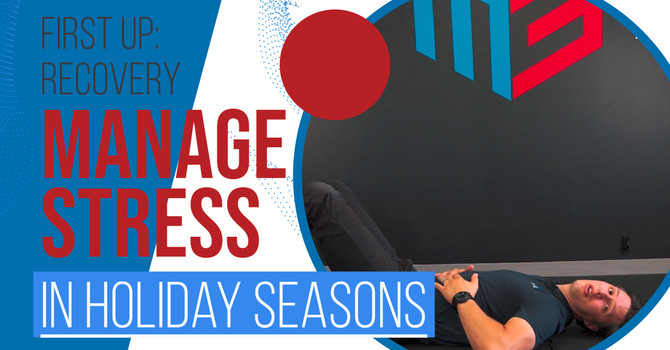
Tennis is more than just an activity for much of our community.
Picture this, you found your tribe. Maybe you've been an athlete your whole life or just enjoyed being active, you wanted a way to stay fit, get outside, and make some new friends, so you decided to try out a tennis league. Enter an entirely new lifestyle, you enjoy it way more than you expected, you feel fantastic and you've made new friends you feel like you've known your whole life. And then it begins....
It all starts with a funny step.
Your knee feels funny, you didn't feel a pop so surely you're ok? You take it as a wake-up call to make sure you warm up well and be more careful. The next morning it's sore, but you need to go to drill because there's a tournament coming up and you can't let your team down.
One thing leads to another.
Even though it wasn't a big injury, you notice your knee gets sore often and you can tell you're "guarding" it now. A few weeks later your elbow starts to feel sore after a match, then your lower back, and now we're fighting off plantar fasciitis. You go and get it treated and it feels better, but each time you get back to regular play it tends to flare up. You're wondering whether there is a way to prevent this? Someone suggests taking a break from tennis for a few months, but...
More than a game.
"I can't stop playing." "My team needs me." "This is my mental health break." "This is what I do with my friends, what if we don't have anything else to do together." I've heard these and more concerns when it comes to tennis injuries and it truly shows how much this activity is giving to the people who participate and how important it is to keep them on the court. Thankfully there is so much you can do to keep playing the sport you love.
So what can we do to help prevent injuries?
While general strengthening is a good starting place, focusing on tennis-specific strength training will make a world of difference in preventing tennis-specific injuries and improving tennis performance. There are a few key areas we focus on when it comes to this. Studies show the most frequent regions of injuries in tennis players include the lower extremities (39%-65%), upper extremities (24%-46%), and head/trunk (8%-22%.) As a result, our tennis-specific training focuses on:
- Hips
- Shoulders
- Elbows
- Lower Back
Tennis-focused strength for the shoulder
Most overuse injuries of the shoulder involve the rotor cuff coupled with the bicep tendon. The demands on the rotor cuff are high during the motions required for tennis, and stabilizing the shoulder joint during these motions requires a ton of motor control. Forceful internal rotation of the glenohumeral joint is common in tennis players during repetitive forehand and serving strokes. Additionally, many players lack the strength to slow that forward motion down after those strokes occur.
To combat this, we can focus on strengthening the external rotators and stabilizing the scapula (shoulder blades) with exercises like these:
Tennis-focused strength for the elbow
Incidences of tennis elbow are quite high in recreational and competitive tennis players. This is often a result of overuse and a lack of endurance strength in the wrist and forearm. While strengthening this area will help reduce pain and risk of injury, an efficient stroke involves generating power from the entire kinetic chain, starting with the lower body and working up through the wrist and forearm. The whole body should be working together to create that force, but the forearm and wrist need enough strength to transmit the force into the racquet and eventually the tennis ball. Here are some techniques we use to support this:
Tennis-focused strength for the lower back
Tennis requires a supple spine as you are moving through multiple ranges during a match, including flexion, extension, lateral flexion, and rotation. Core strength demands are sport-specific and tennis players have a unique demand compared to most of the population. The general population tends to have a much stronger lower back extensor strength than abdominal strength. Tennis players tend to have the opposite strength ratio with strong abdominals and a lack of strength in the lower back extensors. With that being said it is still important to train core musculature in all three planes of movement (sagittal, frontal, and transverse) with the understanding that the extensors may need the majority of work. We use exercises like these to train the core for tennis:
Tennis-focused strength for the hips
Many of tennis injuries surrounding the hip area are due to the abrupt motions involved in tennis; quick cuts, sudden stops, and twisting motions require a high degree of not only mobility in the hips but stability and motor control as well. Better range and control of the hip joints can also help to reduce the forces on the lower back and knees. which in turn reduces the risk of injuries to these areas. Here are a few ways we prepare the hips for tennis:
Are you ready for the next step?
If you're ready for a more hands-on approach to preventing injuries and improving recovery join us at Movement Cube for our 6-week Tennis Strength Challenge. We'll take a small group of clients (4-6) through 6 weeks of tennis-focused strength and recovery training. Prepare for an awesome tennis season this year with specific strength training, injury prevention, and a small-group training environment! Give us a call at 918-416-7238 or click contact me below to learn more.

Dwayne Golbek
Contact Me

.jpg)

